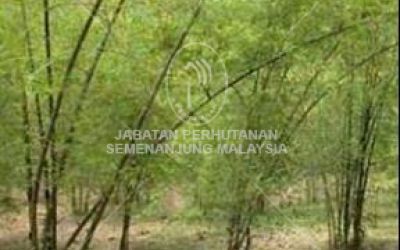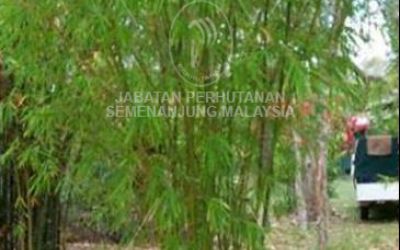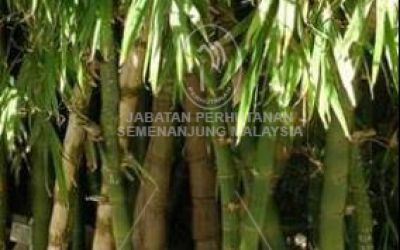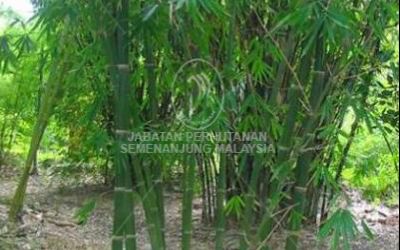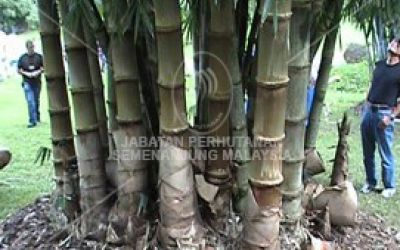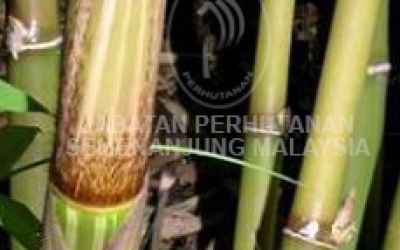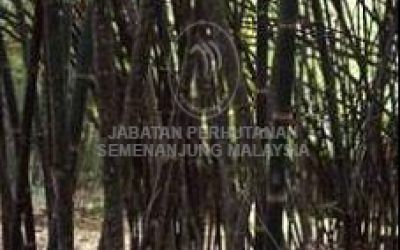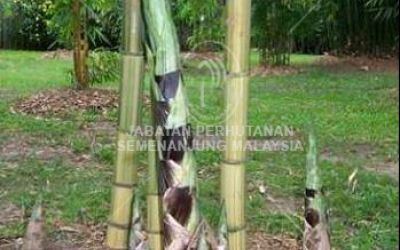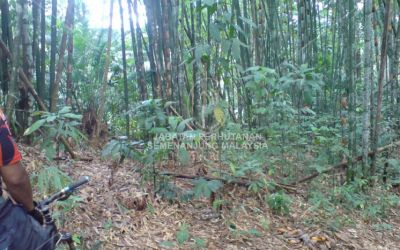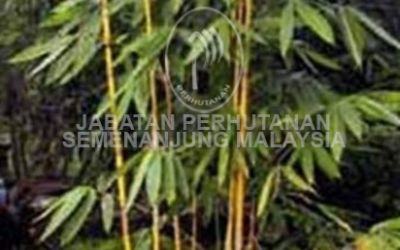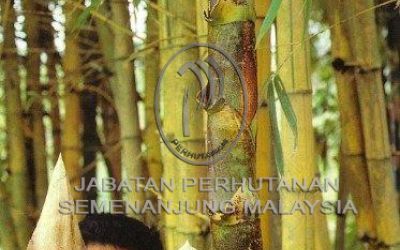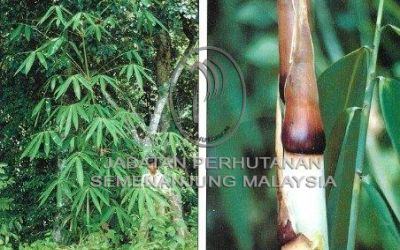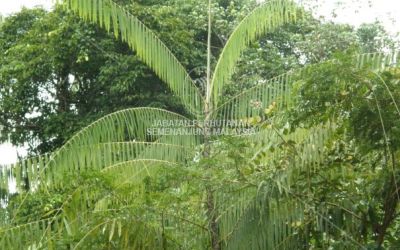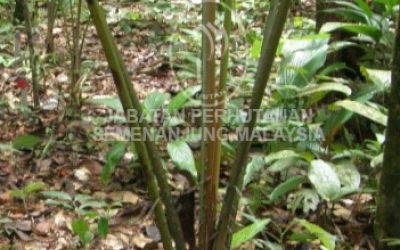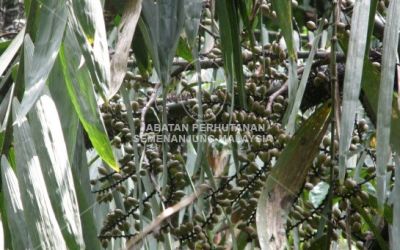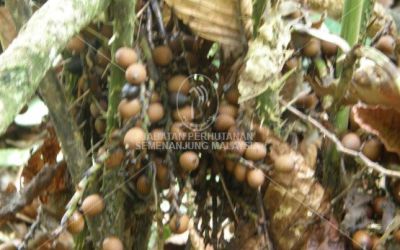-
Bamboo belongs to the group of family Gramineae grasses. It grows in temperate regions in semi-tropical area which has the open and well drained environment. Bamboo can be classified into two types of growth which are monopodial growth (single stem), and sympodial (clump). Bamboos in Malaysia belong to sympodial growth.
Differences between Monopodial and Sympodial Bamboo
Monopodial Simpodial The growth in single The growth in clump Grow in a temperate climate Grow in a tropical climate It is estimated there are 59 bamboo species in Peninsular Malaysia which are from seven genera of Bambusa, Dendrocalamus, Dinochloa, Racemobamboos, Schizostachyum, Thyrsostachys and Gigantochloa.
The amount and percentage of bamboo clumps in Peninsular Malaysia
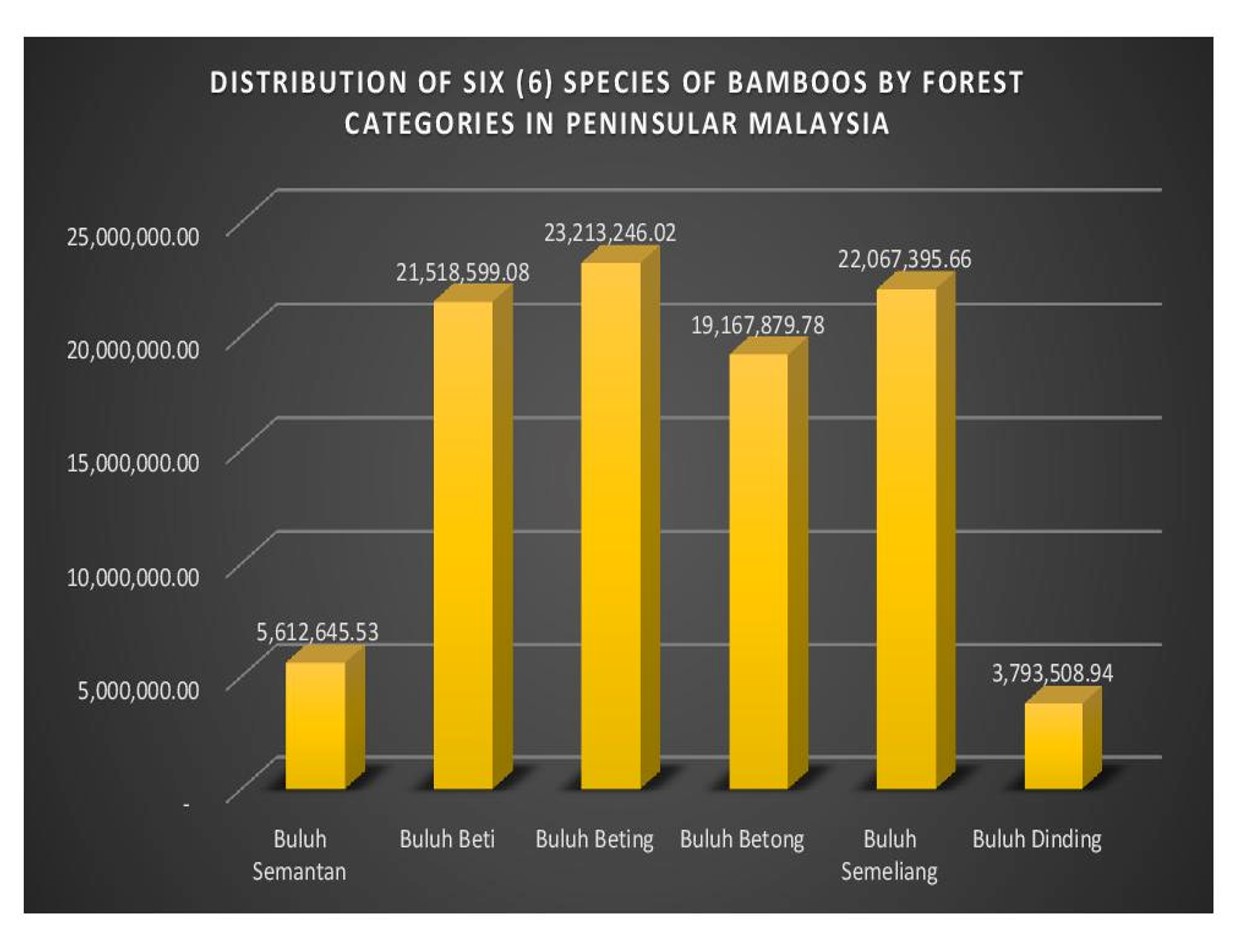
(based on the National Forest Inventory-5)
Many products can be produced from bamboo such as chopsticks, furniture, musical instruments, toothpicks, picture frames, handicrafts, and ornamental. In spite that, Bamboo also being use for landscaping gardens for public recreation and private area.
Species Bamboo And Commercial Use In Peninsular Malaysia
-
Rattan belongs to the family of Palmae and classified in the largest group of the subfamily Calamoideae. There are 13 genera of rattan in the world. They are Calamus, Calospatha, Ceratolobus, Daemonorops, Eremospatha, Korthalsia, Laccosperma, Myrialepis, Oncocalamus, Plectocomia, Plectocomiopsis, Pogonotium and Retispatha.
In Peninsular Malaysia, there are about 107 species of rattan comprising 8 genera where are only 20 species being identified to have market value. Among them are Calamus Manan, C. ornatus, C. turnidus, C. scipionium, and C. Caesius.
Generally, rattan grows in moist areas and will be decreased in number when an area is always experiencing change in humidity. In Peninsular Malaysia, rattan can be found from the coast to the mountains. However, the most suitable habitat for rattans is in dipterocarp forest.
Based on the National Forest Inventory 5 (NFI-5), there were 268,644,319.85 clumps /rattan cane which have been surveyed and the result showed that Calamus manan has the highest percentage compared to the other types of rattans. The fraction is as table 1.
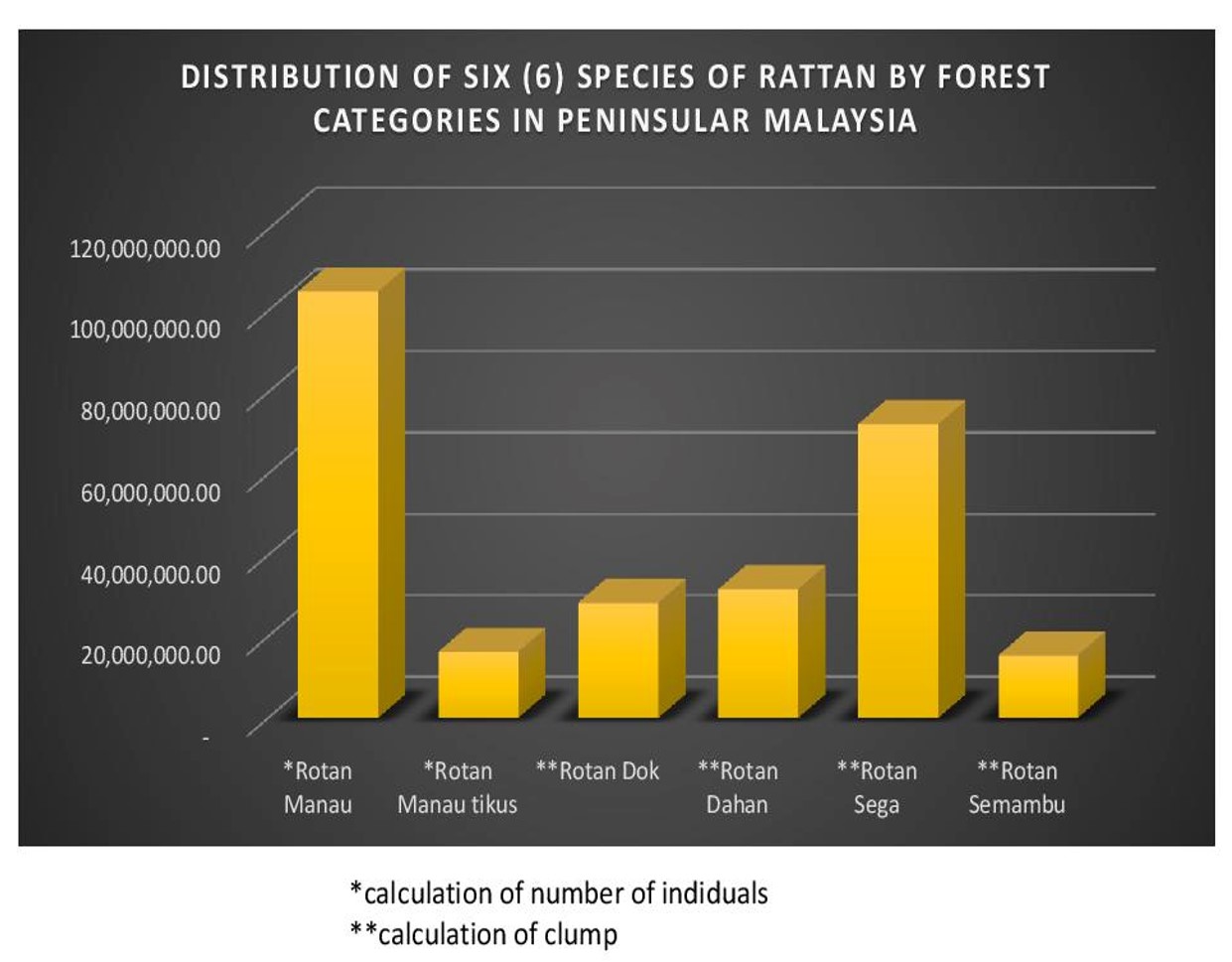
Table 1: Fraction of clump / rattan cane by type
The most economic contribution from rattans is through processing furniture and handicrafts. Among the furniture are chairs, tables, beds, and utensils. The most important species in rattan-based industries in Peninsular Malaysia are Calamus manan and Calamus caesius.
Species Local name Use Calamus manau Rotan manau Furniture Calamus scipionum Rotan semambu Furniture Calamus tumidus Rotan manau tikus Furniture Calamus ornatus Rotan dok Furniture Calamus caesius Rotan sega Furniture Calamus javensis Rotan lilin Bonding materials Calamus laevigatus Rotan tunggal Furniture and handicrafts Calamus axillaries Rotan sega air Furniture and handicrafts Calamus speciosissimus Rotan sega badak Furniture and handicrafts






